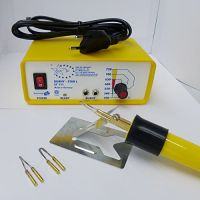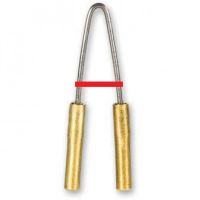Hello,
While reading the reviews about the devices, I have recently purchased a Burny-Star L ST 171 professional pyrograph. (A supply station with temperature control and a butt with a resistance wire).
Reading the topics on this forum, due to the rather complicated process, dissuaded me from trying to create a device from scratch.
Coming to the point: the lowest temperature offered by the burner is 450 degrees - this temperature is definitely too high to work on miniatures with small details, also shading comes with great difficulty (Razertip, unavailable in Poland, offers work from 170 degrees)
Could any of the Readers advise me on a safe way to lower the temperature of the tip?
I was getting ready to prepare my tip from a thicker wire (hoping to lower the temperature) but the fear of burning the power station led me here to ask more experienced people.
I will be grateful for your help on the topic.

While reading the reviews about the devices, I have recently purchased a Burny-Star L ST 171 professional pyrograph. (A supply station with temperature control and a butt with a resistance wire).
Reading the topics on this forum, due to the rather complicated process, dissuaded me from trying to create a device from scratch.
Coming to the point: the lowest temperature offered by the burner is 450 degrees - this temperature is definitely too high to work on miniatures with small details, also shading comes with great difficulty (Razertip, unavailable in Poland, offers work from 170 degrees)
Could any of the Readers advise me on a safe way to lower the temperature of the tip?
I was getting ready to prepare my tip from a thicker wire (hoping to lower the temperature) but the fear of burning the power station led me here to ask more experienced people.
I will be grateful for your help on the topic.




